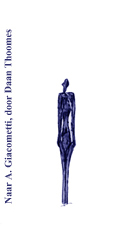The development of three methods of treatment for attachment problems
Children and youth (adolescents)
In practice in a residential children’s home I often came into contact with attachment problems. In psychotherapeutic contact with children and youth (adolescents), I realised that the methods used up until then were not sufficient. Forming relationships remained especially problematic. After analysis of the behaviour it became clear that there were so many behavioural differences that one had to speak of two sorts of problems. For this reason I made a distinction between attachment disorder behaviour and relational disorder behaviour. The following characteristics can be noted:
| attachment disorder | relational disorder |
| observable behaviour | observable behaviour |
| limited social skills | limited social skills |
| ‘everybody’s friend’ behaviour | clinging behaviour |
| domineering, demanding behaviour, aggressive behaviour |
passive and withdrawn behaviour |
| expressions of anxiety, anger, distrust | expressions of anxiety, anger, distrust expressions of abandonment and disappointment |
| undisciplined activities, fluttering behaviour, fleeting playing behaviour | listlessness with regard to activities |
| origin of the problems | origin of the problems |
| a. the environmental factor -varying upbringing situations from birth -insufficient availability of the parents |
a. the environmental factor -varying upbringing situations from early childhood -insufficient availability of the parents |
| b. child factor -the manner of attachment: avoidant attached |
b. kchild factor -the manner of attachment: ambivalently attached |
| conditions which maintain the problem behaviour | conditions which maintain the problem behaviour |
| a. the environment factor -no appropriate upbringing response |
a. the environment factor -no appropriate upbringing response |
| b. child factor -limited impulse control -experiences do not sink in -indifferent attitude -interchangeability of adults |
b. child factor -nervousness – depression -low self-esteem – ambivalence in seeking and resisting closeness |
Differentiation therapy was developed for children with an attachment disorder; phase therapy was developed for children and youths (adolescents) with a relational disorder; basis therapy was developed for adults with a relational disorder.
The above description does not mention adolescents and adults with an attachment disorder. From my experience, the adolescents with an attachment disorder in the children’s home either developed criminal behaviour that could be described as a behavioural disorder, or they developed avoiding behaviour. A cognitive, behavioural therapeutic treatment is a possibility for behavioural disorders. Adolescents and adults with avoiding behaviour (reserved manner of attachment) do not seek therapeutic help easily. They protect themselves against the possibility that the therapist is not available (Dozier, 1990). They indicate that they do not consider relationships important; they are quickly satisfied with friendships of low quality (Zimmerman, 2004). In addition they describe themselves, according to this author, as emotionally independent. Agrawel (2004) names these characteristics for this manner of attachment: positive self-image, a feeling of being worthwhile, negative expectations of others. These problems can be treated with an adapted form of basis therapy.
For children and adolescents with an attachment disorder, a combination of differentiation therapy and phase therapy is recommended.
See further:
Differentiation Therapy |Phase Therapy | Closeness | Some Figures | Basis Therapy | Courses
